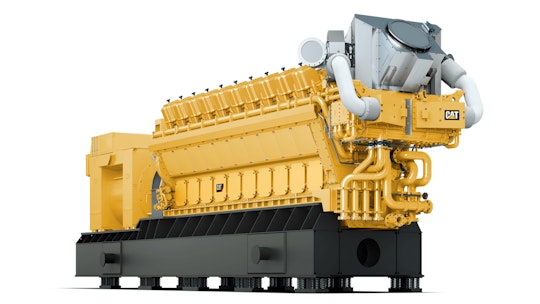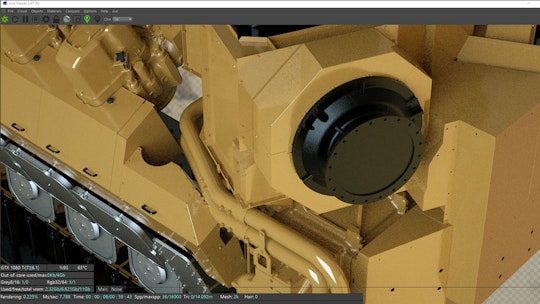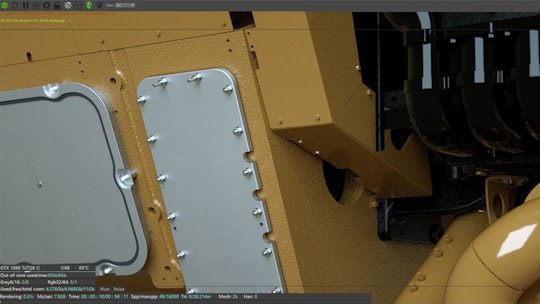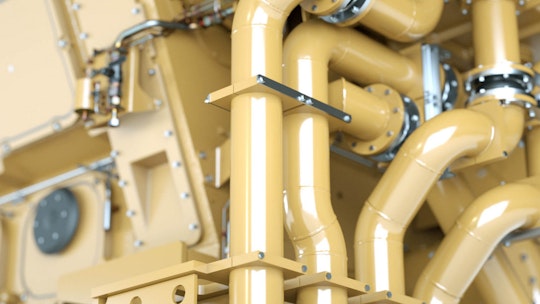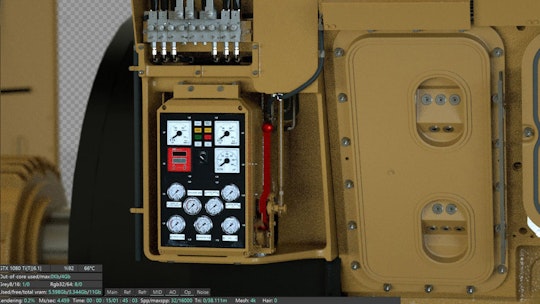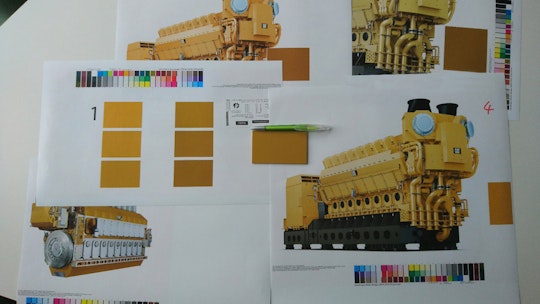
Cinema 4D Gets 20,000 Horsepower Moving The Kiel-based agency New Communication visualizes gigantic construction machines with Cinema 4D.
Caterpillar is the world's largest manufacturer of construction machinery but even if this term is mostly associated with excavators and bulldozers, Caterpillar's product catalogue also includes entirely different machines: for example, the 16CM43C - an offshore generator for generating electricity in structurally weak regions.
Measuring 12 meters long and 7 meters high with an output of about 20,000 hp, the 16CM43C is a heavyweight that can take on just about anythig. The 16CM43C can't just be hauled around for customer presentations, which is why Caterpillar decided to have the monster visualized in 3D. The company commissioned the agency New Communication from Kiel, Germany, to stage the heavyweight as 3D animation. For security reasons, a workstation was set up at Caterpillar for agency employee Michael Tschernjajew: not a bad PC but one that left a little to be desired in terms of its graphics card. This is why the graphics-intensive work was later carried out on powerful PCs at New Communication.
A particular challenge on this project was the source material: Caterpillar provided the CAD data for the 16CM43C. At first glance, it was obvious that the 16CM43C was gigantic, and its design data was no less massive. Michael Tschernjajew summarizes his experiences for this project:
"The design file literally contained every part of the machine down to the last screw. I opened the STP file in Rhino and exported it as an FBX. This kept Rhino busy for about 10 hours. The resulting FBX file was 3.7 GB large and contained more than 300,000 objects. I was really a little shocked and seriously worried if Cinema 4D could handle it! In fact, it took Cinema 4D a while to open the file but everything went fine in the end. The rest of the workflow was to copy individual elements from the source file to a new file where they could be grouped. I didn't want the file I wanted to use for rendering to contain 300,000 objects. There were a lot of objects in the file that were used multiple times: hundreds of screws, nuts, washers, gaskets and many other objects, which I could create and use more efficiently with regard to memory as instances or MoGraph clones. Because the customer wanted to continue using the model to create profile illustrations, it was important to keep an eye out for any changes that might be seen in such renderings when restructuring the inner workings of the 16CM43C.

A big help in reducing the file to a reasonable size was the Polygonreducer, which has been part of Cinema 4D since Release 19. Without it, it would have been very difficult to reduce the size of the scene beyond object level optimization. Some parts of the scene were really complex and I used a workflow with XRefs for these. This made it possible to keep some parts in the scene, and if they weren't visible in a shot, I could just turn them off. This ensured that all parts were in the scene whenever I needed them. I just turned them off and on as needed. This was important, as a team from Caterpillar checked the model for completeness at the end.
Then the materials for the 16CM43C were defined: painted metal, aluminum, cast iron and special materials like rubber, plastic and not to forget the characteristic Caterpillar yellow. When the model and materials met the customer's expectations, we created a simple studio setup and defined a lighting system in which the machine was shown to its best advantage and special points of interest were further highlighted. Rendering was done in 8K resolution, and for post-production we created some masks that allowed us to make specific color and contrast corrections.
The 16CM43C is literally a
monster of a machine and with Cinema 4D I had a tool that let me easily
master the tasks at hand," Michael Tschernjajew finishes.
Caterpillar Website
www.cat.com
New Communication Website
https://www.new-communication.de/

